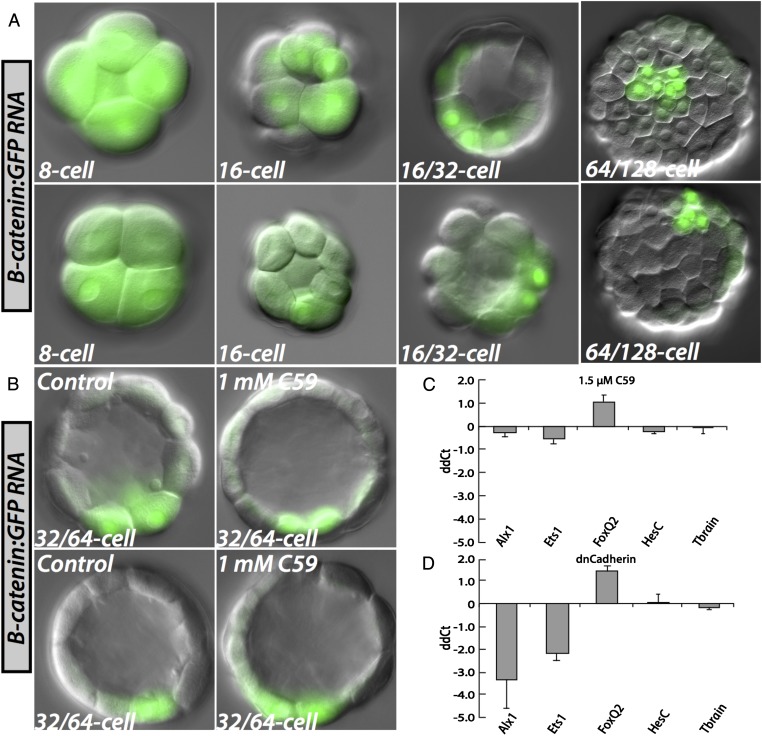Fig. 4.
Requirement for a Wnt-signal-independent β-catenin polar localization system. (A) Early cleavage Et embryos demonstrating progressive spatial restriction of an injected β-catenin:GFP mRNA to the vegetal pole. Before 16-cell stage, this mRNA is found in all cells of the embryo. At fourth cleavage, the mRNA comes to be restricted to micromere- and micromere-abutting nuclei at the vegetal pole. Several cleavages later, it is only found in a few cells at the vegetal pole, the only likely identity of which is the micromeres because they are disposed exactly as are the cells expressing micromere genes (Fig. 1). (B) Early cleavage embryos treated with C59, a reagent inhibiting porcupine-dependent Wnt signaling. C59 does not effect spatial restriction of β-catenin:GFP mRNA. (C) Quantitative effects, measured by QPCR, of treatment with 1.5 μM C59 on relevant genes in 15-h Et embryos. The difference in cycle number (ddCt) with respect to an uninjected control group is shown on the ordinate. Error bars represent the SD of four independent experiments. (D) QPCR analysis of effects at 16 h in Et embryos of injected dominant-negative Cadherin mRNA. Error bars represent the SD of two independent experiments.

